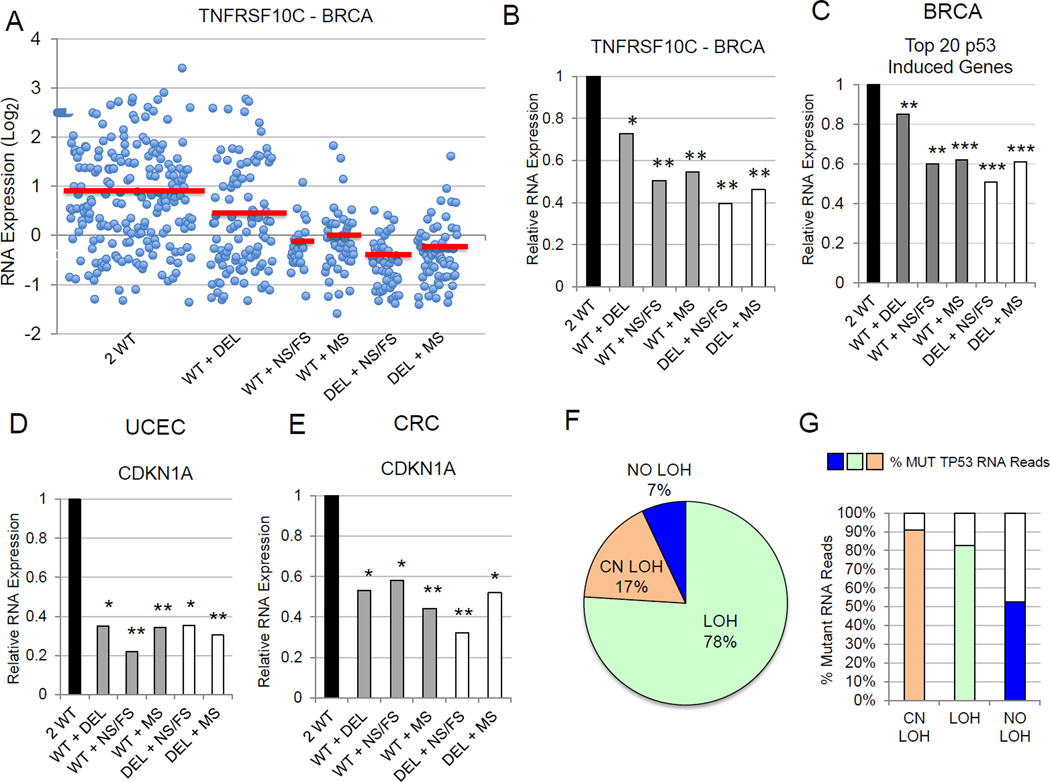Figure 4.
Cancers with TP53 mutations display deficient transcriptional activation of p53 target genes, regardless of the status of the second TP53 allele. (A) Scatter plot showing p53 target gene TNFRSF10C(TRAIL-R3) expression values for each individual tumor in each TP53 allele group of breast carcinomas. The breast carcinomas were stratified into six TP53 allele categories (2 WT, WT + DEL, WT + FS/NS, WT + MS, DEL + NS/FS, DEL + MS) and mean TNFRSF10C expression values for each TP53 allele group are symbolized by red bars. (B) Bar graph simplifying data from panel A showing TNFRSF10CRNA expression levels in breast carcinomas. Mean expression levels were normalized to mean p53 target expression levels in the 2 WT TP53 category (set to a value of 1.0). For panels B-E, asterisks indicate the relative significance of the difference in expression between the designated TP53 category and the 2 WT TP53category. *P < 5E-02; **P < 1E-05; ***P < 1E-25. (C) Bar graph of averaged values of top 20 p53-induced target genes for each TP53 allele category in breast carcinomas relative to values of 2 WT TP53 breast carcinomas. (D,E) Mean CKDN1A (p21CIP1) gene expression in six TP53 allele categories of endometrial cancers (D) and colorectal carcinomas (E). (F) The vast majority of tumors with missense TP53 mutations exhibit either TP53 loss of heterozygosity (LOH) or copy number neutral loss of heterozygosity (CN LOH). For four cancers (BRCA, OVCA, UCEC, CRC) with high TP53 mutation rates, DNA sequence reads for individual tumors were compared for relative frequencies of mutant versus wildtype TP53 alleles. CN LOH status was assigned to tumors with a TP53 mutation that were diploid for TP53 by copy number analysis, but displayed more than a 0.65 mutant TP53 allele fraction based on collected DNA sequence reads after adjustment for tumor purity. Diploid TP53 mutant tumors with less than 0.65 mutant TP53 allele fractions were designated NO LOH. LOH tumors were those tumors with a TP53 mutation but exhibiting a haploid TP53 allele number by copy number analysis. (G) Tumors with missense TP53 mutations and LOH or CN LOH lose expression of wildtype p53 mRNA. Individual tumor mutant and wildtype TP53 RNAseq reads for the four cancer types in (F) were used to determine fractions of mutant TP53 message in each tumor and these were averaged across all tumors with missense TP53 for each LOH category.

